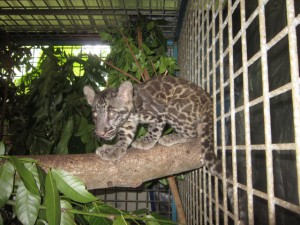The Wildcat Haven project in the West Highlands has completed a winter fieldwork season resulting in 100 domestic cats being neutered over the last 12 months, expanding the wildcat threat-free region to almost 800 square miles covering Ardnamurchan, Sunart, Morvern and Moidart.
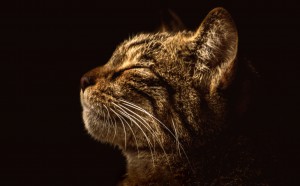 As winter fieldwork closes, conservation project Wildcat Haven has added a remarkable 300 square mile extension to their threat-free region designed to protect the Scottish wildcat from extinction. Covering several connected peninsulas in the West Highlands, which are protected at heavily monitored land bridge choke-points, the project has carried out intensive feral and domestic cat neutering, working closely with landowners and the local community since 2008, to humanely remove the primary threat to wildcats; cross-mating, or hybridisation, with domestic cats.
As winter fieldwork closes, conservation project Wildcat Haven has added a remarkable 300 square mile extension to their threat-free region designed to protect the Scottish wildcat from extinction. Covering several connected peninsulas in the West Highlands, which are protected at heavily monitored land bridge choke-points, the project has carried out intensive feral and domestic cat neutering, working closely with landowners and the local community since 2008, to humanely remove the primary threat to wildcats; cross-mating, or hybridisation, with domestic cats.
Chief scientist on the project, Dr Paul O’Donoghue, explains further, “It’s
all about hybridisation, the wildcat is a very capable survivor and prefers to breed with other wildcats, but it’s so outnumbered by domestic cats that hybridisation is inevitable. This means that over a few generations, those wildcat genes are lost, and you’re just left with domestic and feral cats causing big problems for prey species and themselves; domestics are basically desert cats and, unless they’re curled by a warm fire every night, they live a miserable existence in the Scottish Highlands.”
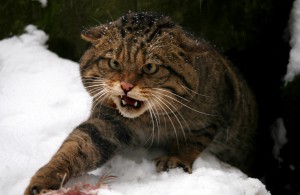 Working in tight winter fieldwork windows and the worst of the Highlands weather across rough ground, the team has neutered over 50 cats in the last month and more than 100 in the last year, leaving almost 800 square miles where the entire domestic cat population is neutered, allowing the wildcats to begin rebuilding their population.
Working in tight winter fieldwork windows and the worst of the Highlands weather across rough ground, the team has neutered over 50 cats in the last month and more than 100 in the last year, leaving almost 800 square miles where the entire domestic cat population is neutered, allowing the wildcats to begin rebuilding their population.
O’Donoghue adds, “In-situ conservation is so important for this species, there’s very clear recommendation from the IUCN that captive breeding shows no evidence of working for wildcats and that every effort must be made to protect them in the wild. A lot of people were saying ten years ago it just wasn’t possible to remove the domestic cat threat, but we’ve shown it can be done. Our first peninsula, 200 square mile Ardnamurchan, hasn’t had a report of an intact feral or domestic cat in three years now; soon the only cats left will be neutered pets and farm mousers.”
The news follows endorsement Humane Society International UK last year which has sponsored the project to support its exceptional animal welfare standards and humane domestic cat control.
HSI UK Executive Director Claire Bass said; “This is a fantastic example of compassionate conservation in action. Saving this endangered species is of course a fantastic goal, but we’re equally inspired and impressed by the positive impact this work has for feral and domestic cats, humanely stopping uncontrolled breeding into a harsh environment, stopping disease transmission, and promoting responsible pet ownership. Wildcat haven is providing a humane and effective conservation solution, instead of reaching to the gun or poison to remove feral cats, or imprisoning the last remaining wildcats in zoos.”
Wildcat Haven is now looking to expand as far as Fort William and open up further Haven regions in the West Highlands. O’Donoghue explains, “We have now developed a proven template for wildcat conservation that can be rolled out across the Western Highlands. 800 square miles can home around 100 true Scottish wildcats, but our aim is a 7000 square mile threat-free area that could hold a sustainable population and save them from extinction. Wildcat Haven is living proof that the Scottish wildcat can and must be saved in the wild where they belong.’’
Photo and video;
Camera trap stills ©2016 Wildcat Haven; potential pure wildcats awaiting genetic test results living in Wildcat Haven and other West Highlands study sites where future Haven regions are planned; two camera trap videos available for TV news.
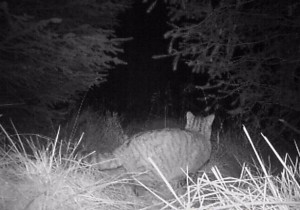
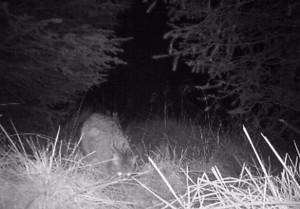
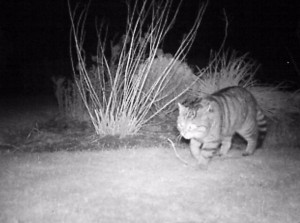
Scottish wildcat stills please credit Neville Buck and Adrian Bennett.
Website; www.wildcathaven.com


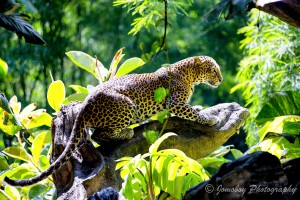
 As winter fieldwork closes, conservation project Wildcat Haven has added a remarkable 300 square mile extension to their threat-free region designed to protect the Scottish wildcat from extinction. Covering several connected peninsulas in the West Highlands, which are protected at heavily monitored land bridge choke-points, the project has carried out intensive feral and domestic cat neutering, working closely with landowners and the local community since 2008, to humanely remove the primary threat to wildcats; cross-mating, or hybridisation, with domestic cats.
As winter fieldwork closes, conservation project Wildcat Haven has added a remarkable 300 square mile extension to their threat-free region designed to protect the Scottish wildcat from extinction. Covering several connected peninsulas in the West Highlands, which are protected at heavily monitored land bridge choke-points, the project has carried out intensive feral and domestic cat neutering, working closely with landowners and the local community since 2008, to humanely remove the primary threat to wildcats; cross-mating, or hybridisation, with domestic cats. Working in tight winter fieldwork windows and the worst of the Highlands weather across rough ground, the team has neutered over 50 cats in the last month and more than 100 in the last year, leaving almost 800 square miles where the entire domestic cat population is neutered, allowing the wildcats to begin rebuilding their population.
Working in tight winter fieldwork windows and the worst of the Highlands weather across rough ground, the team has neutered over 50 cats in the last month and more than 100 in the last year, leaving almost 800 square miles where the entire domestic cat population is neutered, allowing the wildcats to begin rebuilding their population.


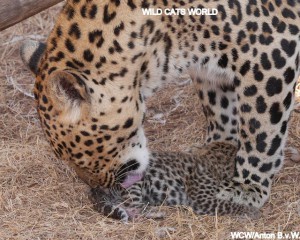 Felicia Immediately started co-mothering Feline’s cubs and was allowed to do so. It happened so that Felicia also was pregnant herself. For almost 2 months they happily lived together (also the males were shortly introduced which went super as well), until disaster stroke and one of the cubs (Kali) sadly died due to an unfortunate incident. When Feline was occupied with the dead cub, first grooming it, then starting to pace up and down with it, and at last partly eating it (like always in nature) Felicia took Olive to the other side and kept her safe there. Felicia also clearly was not herself. After the remains of poor Kali were cleared, Feline started searching and calling for a long time and she clearly had a trauma, which sadly also resulted in her not being able to co-mother Felicia’s cub the first months (even though she was present at the birth, January 3rd 2016, and took care of Solo when Felicia’s second cub didn’t come out as well being a breech-birth…legs first), as she clearly wanted this little boy as a replacement for her lost Kali, so she kidnapped the boy whenever she got the chance. Felicia didn’t mind the first time but the next times Feline took off with little Solo, she got protective, and they were fighting over the little boy so that we were very worried it might get hurt. Felicia is still visiting Feline and little Olive but for a little while longer we keep Solo away from Feline, until he is big enough not to carry around (to be kidnapped..) any longer. The daddies Felipe and Felix are both very kind, gentle and patient to the little ones. Very exceptional to see.
Felicia Immediately started co-mothering Feline’s cubs and was allowed to do so. It happened so that Felicia also was pregnant herself. For almost 2 months they happily lived together (also the males were shortly introduced which went super as well), until disaster stroke and one of the cubs (Kali) sadly died due to an unfortunate incident. When Feline was occupied with the dead cub, first grooming it, then starting to pace up and down with it, and at last partly eating it (like always in nature) Felicia took Olive to the other side and kept her safe there. Felicia also clearly was not herself. After the remains of poor Kali were cleared, Feline started searching and calling for a long time and she clearly had a trauma, which sadly also resulted in her not being able to co-mother Felicia’s cub the first months (even though she was present at the birth, January 3rd 2016, and took care of Solo when Felicia’s second cub didn’t come out as well being a breech-birth…legs first), as she clearly wanted this little boy as a replacement for her lost Kali, so she kidnapped the boy whenever she got the chance. Felicia didn’t mind the first time but the next times Feline took off with little Solo, she got protective, and they were fighting over the little boy so that we were very worried it might get hurt. Felicia is still visiting Feline and little Olive but for a little while longer we keep Solo away from Feline, until he is big enough not to carry around (to be kidnapped..) any longer. The daddies Felipe and Felix are both very kind, gentle and patient to the little ones. Very exceptional to see.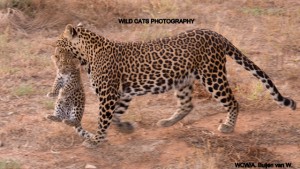 Also the two cubs do love to play with each other (both being “single kids”) and they do so daily now Solo is big enough to handle his bigger girlfiend Olive.
Also the two cubs do love to play with each other (both being “single kids”) and they do so daily now Solo is big enough to handle his bigger girlfiend Olive.